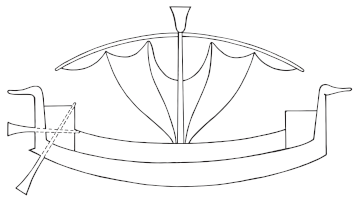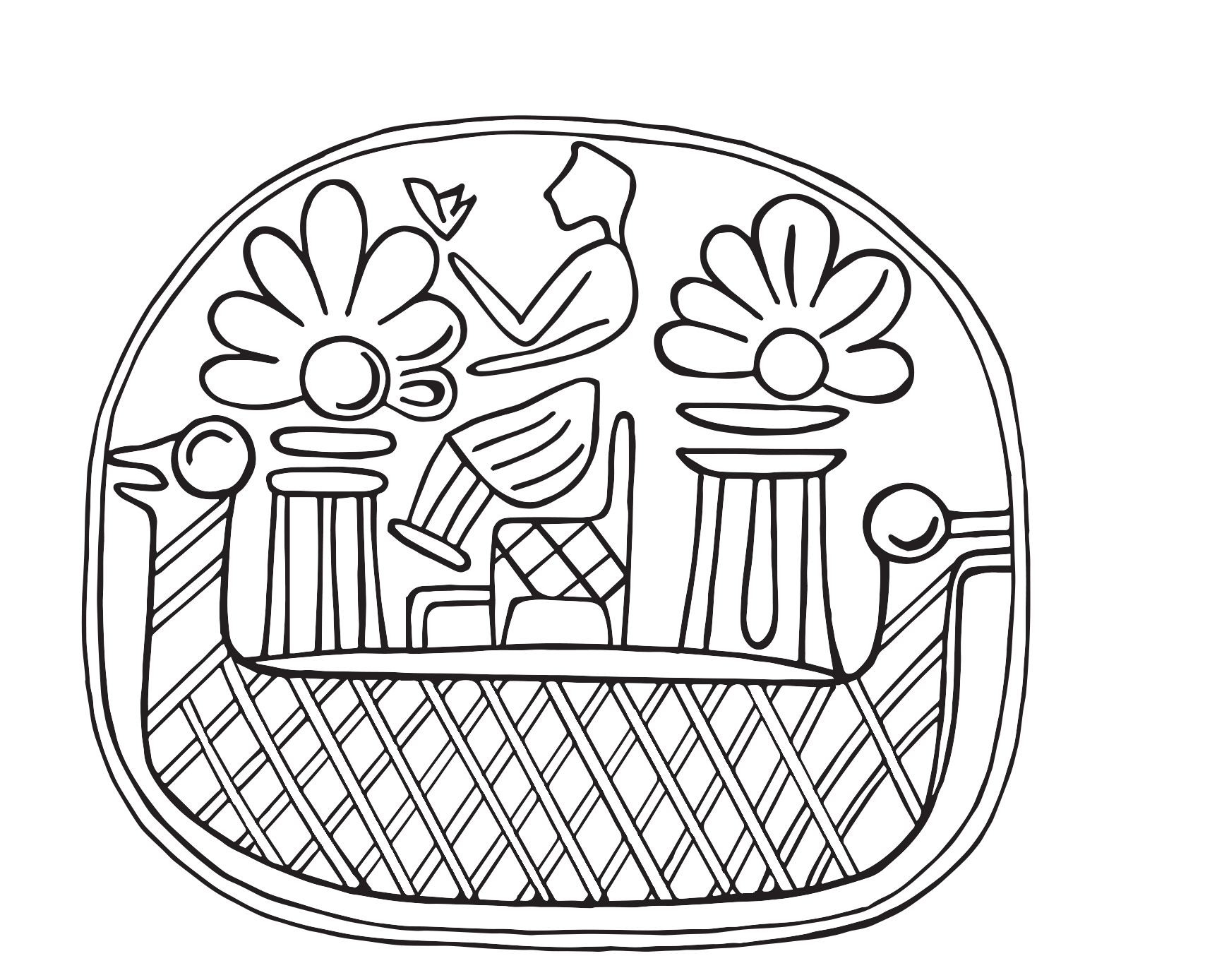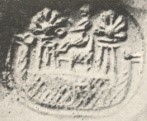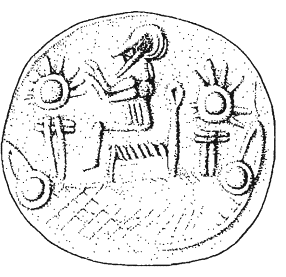(L21a): Crescentic hull covered in a hatched motif, with symmetrical
posts ending in outward-facing bird-head devices with oversized eyes.
The hatching is probably meant to indicate a reed/papyrus boat.
L21b: Bowl-shaped, crescentic hull with a hatched motif. There are
no posts extending above the sheer. The posts show an oversized eye and
an upturned triangular break.
ceremonial boats
L21a-b
c. 650 B.C.
L21a: Unknown, possibly Jerusalem; L21b: purchased from Irbid, Jordan
L21a: 18 x 16 x 5-7 mm; L21b: 17 x 16 x 5-7 mm
L21a: seal of "Elishama, son of Gedalyahu." Fine compact limestone scaraboid, flat base, slightly domed top. Browned by an oil bath, traces of reddish veins. Shallow hole at one end, but drilling incomplete through the stone.
L21b: fine compact limestone scaraboid, flat base, slightly domed top. Milk chocolate brown color. Drilled through from both ends.
Basch 1987: 304-305, no. 641; Culican 1970a: 32-33; Stieglitz 2000: 12, fig. 2; Tushingham 1971; Vincent 1909: 121
The seal was bought in 1905 and was regarded by Vincent as a forgery, due to the clumsiness of the design and cutting, the choice of material, and the bad reputation of the salesman (Culican 1970: 32-33). The seal shows an enthroned male figure on a chair with a straight back and a low footstool in front, possibly brandishing a lightning bolt in his uplifted right arm (according to Dalman). He is wearing a flat pileus of the type seen in Phoenicia and Palestine during the Persian period. The figure is flanked on either side by stylized palmette sacred trees placed on supports. Culican suggests these might be poorly drawn versions of the pharaonic fans often mounted on solar boats. Vincent notes that the boat and the robe of the seated figure are covered in large and smaller hatching respectively. Culican thinks that the seal is likely authentic, and notes that the rendering of the robe is consistent with Phoenician seals, the Baal’s robe is typically hatched.
Another seal from Irbid, Jordan shows the exact same theme but with a somewhat different boat. It provides strong support that the Elishama seal is authentic given the very close parallels between the two. The pedestals in front and behind the figure are capped with a circular object with nine radiating strokes which resemble rays, unlike the petal-like plumes of the Elishama seal. Tushingham interprets these as burning braziers or cressets, a ritual apparatus that provides both light and incense. He likens them to portable metal incense-stands called hammân. Based on this reading, he suggests that the deity might be Ba’al-hammân (“Lord of the brazier”) documented in the Kilamu inscription (c. 825 BC) and later known as the chief god of Carthage. The Canaanite physiognomy and the kilt which is typical of Baal figures provide further support to this reading. Another alternative is that it shows Ba’al-shamêm (“Lord of Heaven”), the tutelary god of Tyre. Tushingham argues that the bird-head motif of the boats is a feature influenced by local Syro-Palestinian usage even if the motif probably ultimately draws from the Egyptian solar boats.
There are two other Hebrew seals though to depict ships. The “seal of Ma’asetahu, son of Isaiah” was published by Stieglitz (no. 2), but Yadin rejects his interpretation of the image as a ship, arguing that the seal instead depicts a well-known palmette motif in the so-called Phoenician style found on several other Hebrew seals (Stieglitz 1973: 236-237, pl. 36:d; Yadin 1974: 32-33). The second seal belonging to ‘Oniyahu, son of Merab” was published by Avigad (no. 3) (Avigad 1982) and sold at Christie’s in 2013 despite being warned by Robert Deutsch from Tel Aviv university that the seal is a fake.
Basch, L. 1987. Le musée imaginaire de la marine antique. Athens: Institut Hellénique pour la preservation de la tradition nautique.
Culican, W. 1970a. “Problems of Phoenicio-Punic Iconography: A Contribution,” AJBA 1.3: 28-57.
Stieglitz, R.R. 2000. “Hebrew Seafaring in the Biblical Period,” Mediterranean Historical Review 15.1: 5-15.
Tushingham, A.D. 1971. “A Royal Israelite Seal (?) and the Royal Jar Handle Stamps (part two),” BASOR 201: 23-35.
Vincent, H. 1909. “Pseudo-figure de Iahvé récemment mise en circulation,” Revue biblique 6: 121-27.












